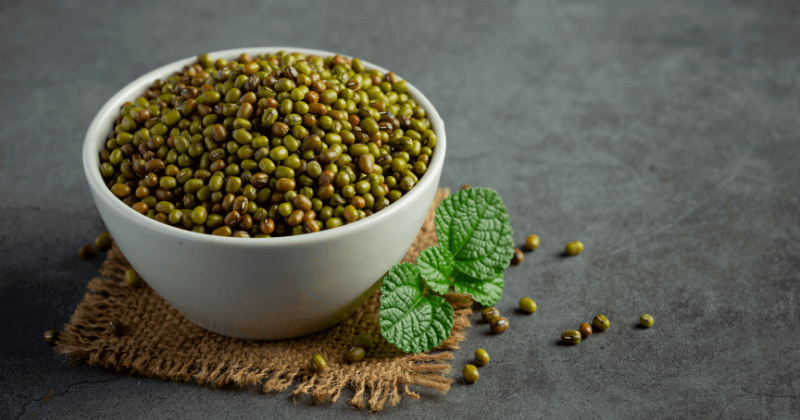Protein in 1 Bowl of Moong Dal
Moong dal, also known as green gram or yellow lentils when dehusked, is a staple in Indian households.
It is not only delicious but also packed with essential nutrients, making it an excellent source of protein.
Whether you are a fitness enthusiast, a vegetarian looking for protein alternatives, or simply someone who enjoys healthy eating, moong dal should be a part of your diet.
In this blog, we will dive deep into the nutritional benefits of moong dal, focusing on how much protein you get from 1 bowl, and why it's an ideal addition to an Indian diet. Let’s explore the power of moong dal with six essential subtopics!
1 Bowl of Moong Dal?
When considering a protein-rich diet, moong dal is an excellent choice.
One bowl of moong dal provides around 14g of protein, making it a nutritious, plant-based protein source rich in fiber, vitamins, and minerals.
This makes it a perfect plant-based protein source, especially for vegetarians and vegans.
Here’s a quick breakdown of the nutritional value of 1 bowl of cooked moong dal:
-
Calories: ~200 kcal
-
Protein: ~14g
-
Carbohydrates: ~35g
-
Fiber: ~7g
-
Fats: ~1.2g
-
Iron, Magnesium, and B Vitamins: Present in significant amounts
This protein content makes it comparable to animal-based protein sources like eggs and chicken while being much easier to digest.
Why Moong Dal is the Best Plant-Based Protein Source
For people who follow a vegetarian or vegan diet, finding good protein sources is crucial. Moong dal stands out because:
-
Easily digestible – Unlike other dals, moong dal is light on the stomach and perfect for all age groups.
-
Low in calories – Ideal for Weight Watchers looking for a protein-packed meal without excess fat.
-
Rich in essential amino acids – While not a complete protein, combining it with rice or roti makes it a wholesome meal.
-
No bloating issues – Compared to other legumes, moong dal causes minimal bloating and gas, making it an excellent choice for daily consumption.
Moong Dal vs Other Protein Sources: Which is Better?
Let’s compare 1 bowl of moong dal with other popular protein sources:
| Food Item | Protein (per serving) | Calories | Additional Benefits |
|---|---|---|---|
| Moong Dal (1 bowl) | 14g | 200 kcal | High fiber, easily digestible |
| Boiled Egg (2 eggs) | 12g | 140 kcal | Rich in Vitamin B12, choline |
| Chicken Breast (100g) | 27g | 165 kcal | Lean protein, low fat |
| Paneer (100g) | 18g | 265 kcal | High in calcium |
| Chickpeas (1 cup cooked) | 15g | 270 kcal | High fiber, good for digestion |
While moong dal may not have as much protein as chicken, it offers a balanced nutrient profile, making it an excellent option for daily meals.
Health Benefits of Eating Moong Dal Regularly
Beyond protein, moong dal offers numerous health benefits:
🌟 Helps in Muscle Building & Weight Loss
Since protein is essential for muscle growth and repair, moong dal supports fitness goals.
The high fiber content keeps you full longer, reducing unnecessary snacking.
🌟 Good for Digestion & Gut Health
Moong dal contains both soluble and insoluble fiber, which promotes a healthy digestive system.
It aids in preventing constipation and maintaining a healthy gut microbiome.
🌟 Regulates Blood Sugar Levels
With a low glycemic index, moong dal prevents sudden spikes in blood sugar, making it a great option for diabetics.
🌟 Supports Heart Health
The presence of magnesium and potassium helps in maintaining a healthy heart by reducing blood pressure.
🌟 Boosts Immunity
Being rich in antioxidants and vitamins, moong dal strengthens the immune system and fights inflammation.
Best Ways to Include Moong Dal in Your Diet
Now that we know moong dal is a powerhouse of nutrition, let’s explore some delicious and healthy ways to add it to our meals:
✔️ Traditional Moong Dal Tadka
A simple and nutritious way to enjoy moong dal is by preparing a dal tadka with onions, tomatoes, garlic, and cumin seeds.
✔️ Moong Dal Sprouts
Sprouting moong dal increases its nutrient absorption. You can add it to salads or make moong dal chaat for a tangy twist.
✔️ Moong Dal Chilla (Pancake)
Blend soaked moong dal to make a batter and cook thin pancakes for a protein-packed breakfast.
✔️ Moong Dal Khichdi
A perfect comfort food that combines moong dal with rice, ideal for digestion and overall well-being.
✔️ Moong Dal Soup
Light and easy to digest, moong dal soup is great for those recovering from illness.
✔️ Moong Dal Halwa
For those with a sweet tooth, moong dal halwa is a rich, protein-filled dessert option.
Who Should Eat Moong Dal and Who Should Avoid It?
People Who Benefit the Most
-
Vegetarians & Vegans – A great alternative to meat-based protein sources.
-
Fitness Enthusiasts – Ideal for muscle building and recovery.
-
Elderly & Kids – Easy to digest and rich in essential nutrients.
-
Diabetics & Heart Patients – Regulates blood sugar and supports heart health.
Who Should Consume in Moderation?
-
People with Kidney Issues – Since moong dal is high in protein, individuals with kidney disease should consult a doctor before increasing consumption.
-
People with Gout – Excess legumes can increase uric acid levels, so moderation is key.
Conclusion
Moong dal is one of the best plant-based protein sources available in every Indian kitchen.
With 1 bowl of moong dal providing 14 grams of protein, it is a smart and affordable way to meet daily protein needs.
Whether you eat it as dal, sprouts, or chilla, incorporating moong dal into your diet is a step toward better health and nutrition.
So, the next time you’re looking for a nutritious meal, remember that a simple bowl of moong dal can be a game-changer!
Try out different recipes and enjoy the benefits of this protein-rich superfood.
